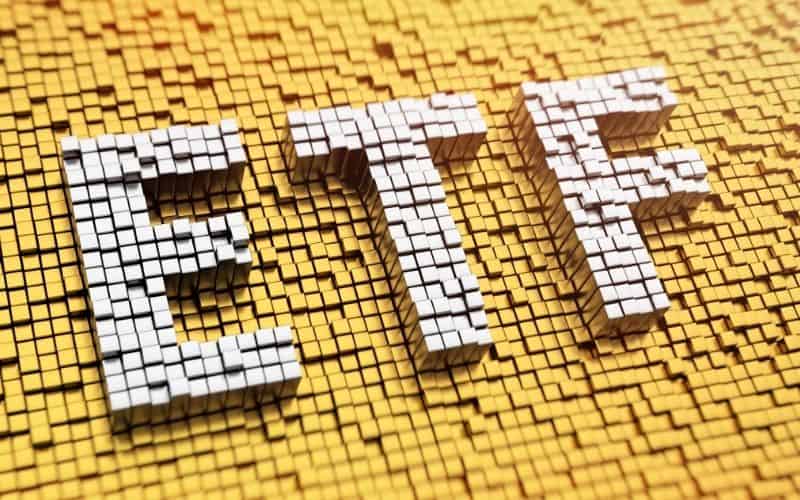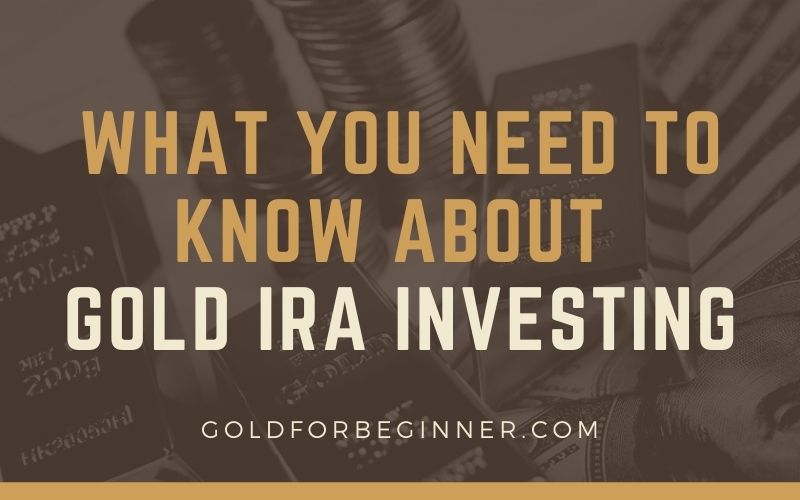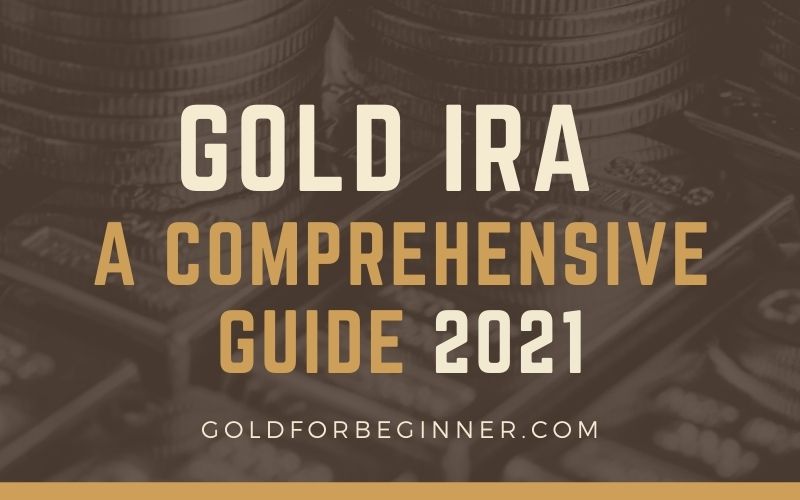Depositors may choose any of the various options to invest in gold – mining stocks, gold mutual funds, gold ETFs, gold certificates, or physical gold in the form of bullion coins, bars, and jewelry. Stocks and mutual funds are only partially affected by the gold prices – the bigger influence being the fluctuations in the securities market.
To get the maximum benefit from investing in gold, investors should opt for ETFs or physical gold. Even as physical gold fully reflects the gold rates, it also comes with the disadvantages of safe storage and entailing extra expenses.
That leaves us with the Gold ETFs.
Let us take a deeper look at them – What are they? How do they function? What led to the creation of ETFs? How did they become so popular? What are the advantages and disadvantages? What are the different types of ETFs?
This article also lists the most popular Gold ETFs and explores reasons for including them in your portfolio.

What are Gold ETFs?
Gold Exchange Traded Funds are commodity ETFs concentrating on the single asset – gold. Exchange-Traded Funds are similar to individual shares and are traded like shares in stock exchanges.
Investing in a Gold ETF doesn’t entitle ownership of the yellow metal. Not when you are holding an ETF nor when you redeem it. At the time of redemption, you will receive a cash equivalent of the share.
Gold ETF is a share-like unit representing physical gold. For example, a single unit of a Gold ETF may represent one-tenth ounce of gold. They may be in paper or dematerialized form and track the price of gold.
Investors are assured of the purity of gold in a Gold ETF. Moreover, the array of fees associated with physical gold such as premium and markup are absent in it. It is the next best thing to owning physical gold. It offers depositors a chance to own gold without holding it, thus avoiding the hassles of secure storage.
How does a Gold ETF work?
They are passively-managed instruments of investment created to track gold rates. They combine the features of individual stocks and mutual funds – they are funds that hold an array of assets like mutual funds but trade on stock exchanges like individual stocks.
Another point where ETFs differ from mutual funds is the way it is traded. ETFs are actively traded throughout the day like stocks while mutual funds are traded at the end of the day. Being traded on stock exchanges, units of Gold ETFs are easier to buy and sell.
Gold ETFs were created as the next best thing to physical gold – eliminating the hassles of holding physical gold without losing out on the advantages of owning them. They accurately reflect the price of gold. The units of Gold ETFs have a positive correlation with gold prices.
ETFs, in general, work by pooling together money from depositors and invest it as per the pre-specified objective of the ETF. The ETFs take a passive investment approach instead of actively calculating the most profitable investment choices. They just track specific indexes with predetermined steps involving fixed investments and the amount to invest.
The goal of the index-based ETF is to match the returns of the benchmark index. The cost of operating the fund is taken out of the profit margin, thus bringing down the returns somewhat lower than that of the benchmark index.
What led to the creation of Gold ETFs?
The first Gold ETF was created in 1961 – a close-ended fund called the Central Fund of Canada. The fund has been listed on the Toronto Stock Exchange since 1966. In 1983, the fund amended its articles of incorporation to offer investors a product of ownership of bullion. Since 1986, the fund has been listed on the American Stock Exchange.
In 2002, Benchmark Asset Management Company Private Ltd filed a proposal for initiating a Gold ETF in India with the Securities and Exchange Board of India. It started functioning after getting the approval in 2007.
In 2003, ETF Securities launched Gold Bullion Securities listed on the Australian Securities Exchange.
The first Exchange Traded Fund specifically designed to track the price of gold was launched in the United States in 2004. The State Street Corporation introduced SPDR Gold shares as an economical alternative to owning physical gold. Today, it is the largest ETF backed by physical gold in the world with $40 billion in assets and a daily trading volume of $1.7 billion.
The latest entrant in the market is Royal Mint with its The Royal Mint Physical Gold – RMAU in 2020. The fund has the distinction of 100% backing with physical gold bars.
Buying physical gold necessitates a big capital. There is further expenditure on the safe storage of bullion products. Gold ETFs are designed to overcome these hurdles for retail investors. They can be purchased in small amounts and accumulated over a period. And, fund holders need not worry about the safety of the bullion.
How did they get so popular?
Gold has been called a ‘precious metal’ for a good reason. It is prohibitively expensive to buy for average investors even small quantities like ½ ounce or an ounce. Gold ETFs make it possible for depositors to take advantage of the investment potential of the gold market for modest sums like $100.
Investors with limited capital get a chance to diversify their portfolio with Gold ETFs. Instead of investing their moderate savings in a single stock and depending solely on it for their success or failure, Gold ETFs offer depositors the chance to expand their investment profile, thus bringing down the risk.
Another plus point of an ETF is its reasonable low fees. ETFs track a specific index, a gold index in the case of a Gold ETF. This way the fund can avoid expenses on costly research on which investments to choose or ways to improve returns. Since ETFs are passively-managed with very less involvement of a manager, fees are lower than that of the actively-managed mutual funds.
ETFs, being traded on stock exchanges like stocks, can be bought or sold any time of the day during trading hours. This gives ETFs the edge to exploit the ups and downs in the market during the day. However, mutual funds can be traded only at the end of the day by which time the advantage may be lost.
As ETFs are traded in stock exchanges, they do invite a commission while trading but no-cost ETF trading is gaining momentum in recent times. Last but not least is the tax advantage on capital gains enjoyed by ETFs, unlike mutual funds.
Why do investors prefer Gold ETFs?
Investors have an array of choices to invest in gold – physical gold (bullion bars and coins, jewelry), mining stocks, gold-specific mutual funds, gold certificates, gold ETFs, gold futures, and options are the most prominent among them. Each of the above investment choices come with pros and cons. It is up to the investor to pick the right one.
While physical gold in the form of bullion bars is the perfect investment to take full advantage of the ups and downs in the bullion market, it comes with some serious drawbacks for some depositors. Such as high capital investment, extra expense on safe storage in a bank safe deposit box or reputed depository, and insurance premium for insuring against theft or loss.
All the rest of the investment choices can be classified as paper gold as they involve ownership of gold or interest in gold in paper form. In the case of most of them, the price of gold is only one of the factors influencing its value. For stocks and mutual funds, the fluctuations of the securities market are the major influencing factor.
Futures contracts and options are excellent investment vehicles but due to their higher risk potential, they are suitable only for more experienced and advanced investors. Moreover, futures necessitate large capital due to the large contract sizes.
Gold ETFs is the perfect investment product designed specifically for retail investors. It allows depositors to put in smaller amounts and make them work well to give good returns. No premium or markup like bullion products, nor expense on safe storage. Unlike other paper investments, they track the price of gold in the true sense.
What are its disadvantages?
One of the few disadvantages of a Gold ETF is that it doesn’t entitle the investor to own an actual gold asset. Depositors do not get to hold gold coins or bars at any point – not while holding the ETF nor when it is redeemed.
Gold ETFs are backed by an array of gold-related investments like gold contracts, derivatives, stocks, and also physical bullion. At the time of redemption, investors are paid the cash-equivalent of gold but never gold itself.
Even as ETFs offer many tax benefits, Gold ETFs may be considered as collectibles by the IRS. This may result in tax consequences.
What are the main classifications of Gold ETFs?
Gold ETFs are not all the same. They may be classified into two groups based on the underlying assets. These are:
- Some focus solely on the gold price in the global or regional bullion market. They track the price fluctuations by holding either the physical bullion or with futures contracts.
- Others use other gold-related investments like stocks of companies involved in mining, refining, and/or production of gold and companies engaged in providing finance to mining companies.
These finance companies offer capital in return for the rights to buy the gold mined at discounted prices. While a mining company has a more direct relationship with the gold prices, a financing company has an indirect involvement in the bullion market.
Within each one of the above classes, there are numerous subclasses. For example, some may concentrate on companies from a particular geographical location or companies of a specific size category or development stage.
Tips for Gold ETF investors
The problem of plenty is confronted by many, especially beginners. When there are too many Gold ETFs available, how to choose one becomes a dilemma. Here are some hints on how to select the right Gold ETF.
- The bigger the ETFs and the more diverse their assets, the lower the fees for investors. The reason is simple to understand. In the larger ETFs, the operational expenses when divided among its shareholders will be lower. Smaller ETFs with fewer shareholders will have a higher expense ratio.
- Bigger ETFs are much easier and cheaper to trade than smaller ones. Trading smaller ETFs may invite higher trading costs that can cut into the profit. This makes smaller ETFs less liquid than the bigger ones.
- Gold mining and streaming stocks may not always have a positive correlation with the gold index trends. They may display zero or negative correlation at times. For those investing in these stocks, this means less or no relationship with gold prices. Depositors need to be aware of the underlying assets of Gold ETFs before investing in them.
- A Gold ETF investing in gold mining stocks may be more volatile to price changes of gold than ETFs holding physical bullion. This has to do with the profits made by gold mining companies. The price changes in the bullion market may have an amplified effect on these stocks. This also means Gold ETFs holding mining stocks may bring in more profit when the market is bullish.
Ultimately, it is up to the investor to decide the right kind of ETF that will suit their portfolio, meet their expectations of returns and risk tolerance. Investors need to be aware that there is no such thing as a perfect ETF that balances all its aspects perfectly for all.
Each Gold ETF has its pros and cons which may be suitable to some investors but not to others. One thing is for sure. They may differ in their approaches but have the same goal – to help investors make money from gold.
Top 8 Gold ETFs
| Gold ETF | Assets Under Management | Expense Ratio | 1-Year Return |
|---|---|---|---|
| SPDR Gold Trust (GLD) | $70.07 billion | 0.40% | 18.20% |
| iShares Gold Trust (IAU) | $31.54 billion | 0.25% | 18.41% |
| SPDR Gold MiniShares Trust (GLDM) | $4.08 billion | 0.18% | 18.41% |
| Aberdeen Standard Physical Gold Shares ETF (SGOL) | $2.65 billion | 0.17% | 18.47% |
| GraniteShares Gold Trust (BAR) | $1.12 billion | 0.17% | 18.51% |
| VanEck Merk Gold Trust (OUNZ) | $0.43 billion | 0.25% | 19.42% |
| VanEck Vectors Gold Miners ETF (GDX) | $16.07 billion | 0.53% | 24.76% |
| VanEck Vectors Junior Gold Miners ETF (GDXJ) | $5.97 billion | 0.54% | 29.70% |
Source: (https://etfdb.com/etfs/commodity/gold/)
More about the market leaders
The top 2 in the list are far ahead of the rest in terms of their experience in the field as well as the assets under management and the value of their holdings. SPDR Gold Trust and iShares Gold Trust have a lot in common including their underlying asset – gold bullion.
SPDR Gold Trust
SPDR Gold Shares began operations in 2004 and tracks the gold price in the over-the-counter (OTC) market. A pioneer and industry leader in Gold ETF, the trust holds 37.72 million ounces of gold, valued at $69.87 billion as the underlying asset for the ETF shares. At the time of launch of the fund, each share corresponded to one-tenth of an ounce. However, the expense ratio of 0.40% has made a dent in the amount of gold represented by each share and it now stands at 0.093764 ounces of gold per share. The fund has 402 million total outstanding shares.
iShares Gold Trust
iShares Gold Trust, occupying the second position, was launched in 2005. The fund tracks the LBMA gold price and has a holding of 16.99 million ounces of gold as backing to its shares. Offering a lower expense ratio of 0.25%, the fund has the cost advantage over the market leader. The amount of gold represented by each share of iShares Gold Trust was one-hundredth of an ounce when it began operations. Now, with the operational expenses eroding its value, it stands at 0.0096 ounces of gold per share. The fund has 1.78 billion outstanding shares as of date.
Though the average daily share volume is higher for iShares, the average daily dollar volume of trading for SPDR Gold Share is about five times that of iShares.
Among the ETFs with holdings in gold mining companies, the top 2 comes from the same family of ETFs – VanEck Vectors. The bigger of the two, VanEck Vectors Gold Miners ETF tracks the NYSE Arca Gold Miners Index that includes companies having more than half of its revenue coming from gold mining and related activities.
The VanEck Vectors Junior Gold Miners ETF tracks the MVIS Global Junior Gold Miners Index that includes small-cap companies into exploration and early stages of mining. This raises the risk but the rewards, if any, will be higher.
Is Gold ETF the right addition to your portfolio?
Just as the gold rates are volatile, Gold ETFs can also be highly volatile in the short term. Again, commodity ETFs are more stable than gold mining ETFs but returns are higher for the latter. The important point is to understand the risks and rewards before including them in the portfolio.
Gold as an asset can help bring balance to a portfolio with diversification and negative or zero correlation with traditional assets. If the idea of including gold in your portfolio appeals to you, Gold ETF is a choice worth considering for inclusion. With an array of advantages among the gold-related financial assets, Gold ETF stands out for its ease of trading, low minimum investment, and diverse options to suit individual priorities.
Bottom Line
Like any other investment choice, before putting your money in, you need to have a good understanding of Gold ETFs. The different types of Gold ETFs, their pros and cons, and such like. You also need to track the performance of a shortlisted few for some time before investing your hard-earned money in them.
Gold tends to cast a spell on investors and dazzle them with its incredible shine. Do not allow yourself to be blinded and let your better sense prevail.

Gold IRA Rollover: A Complete Guide
When you change jobs, it is a common practice to roll over the funds and assets in the old 401 k plan to a traditional

What You Need to Know About Gold IRA Investing
The value of gold as an investment tool is proven over time. Its intrinsic value, excellent liquidity, and its use as a hedge against inflation

Gold IRA: A Comprehensive Guide 2021
Worried about tumbling dollar and looming economic depression? Feeling like sitting on the sidelines when the gold price is going through the roof? Want to
